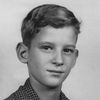Printing to canvas
Feb 28, 2018 06:04:07 #
Using a Canon 100 Pro all my papers are profiled except canvas. I normally print a 6x4inch trial and judge what settings to change from that.
Feb 28, 2018 06:35:44 #
I have a Roland Printer for my sign business and use it to print to canvas all the time. I can print files as wide as 48 inches by a length only limited by the role of canvas I buy which is minimum of 82 feet. So far the biggest I have printed for a customer is 48" x 48".
The material is 11 oz which heavy duty 65% cotton/35% poly. This material stretches well no cracking and is low glare. I have used it to print pictures of family especially the grandkids. I have printed many pictures that decorate the walls of our home.
The material is 11 oz which heavy duty 65% cotton/35% poly. This material stretches well no cracking and is low glare. I have used it to print pictures of family especially the grandkids. I have printed many pictures that decorate the walls of our home.
Feb 28, 2018 07:59:50 #
Feb 28, 2018 08:21:21 #
I really like your Image. It is in my mind a great way to express your mind and talent.
Thanks for sharing.
I do a few as well.
Don
Thanks for sharing.
I do a few as well.
Don
Feb 28, 2018 08:33:53 #
corpsol wrote:
Years ago when I purchased an Epson 2200 I had very good results printing photos on canvas through Photoshop. I recall many trial and error iterations to get the proper setting, but once I did find the recipe I was very pleased. I haven’t done this for some time and cannot recall the printer/Photoshop settings. I don’t have the same energy to put the time and effort in again, so if anyone has some thoughts on the subject I would be very grateful.
If you are like me constantly calibrating your monitor, printers to your computer is time consuming and a pain. Using Photoshop to govern your printer, typically your printer will print a 1/2 stop darker than your monitor.
Simply duplicate your finished image on a layer above, apply the screen mode to increase the brightness by 1 stop and in the transparency slider back it off 40%-50% and then print the image. It will then closely resemble your monitor image.
Reason? Most people have their monitors set far too bright in ambient lit rooms.
Feb 28, 2018 08:48:31 #
donrosshill wrote:
I really like your Image. It is in my mind a great way to express your mind and talent.
Thanks for sharing.
I do a few as well.
Don
Thanks for sharing.
I do a few as well.
Don
Thank you,I like to create these kind of images because anyone can take a photo of a flower.I like to take my images a little further.
Feb 28, 2018 09:04:33 #
Feb 28, 2018 12:12:04 #
Brent Rowlett wrote:
If you are like me constantly calibrating your mon... (show quote)
You cannot really calibrate a printer to a monitor. Monitors and printers are calibrated to separate, custom ICC profiles. To do that correctly, so it actually works as a system, you need a colorimeter or spectrophotometer and its accompanying software.
Monitor calibration and profiling is the most important part of that. Most OEM paper profiles are in the OEM driver, and you can download third party profiles for certain specific photo printers.
A monitor cal kit from DataColor or X-RITE is the most important device you can own, whether you print your own, or use a lab to print. It pays for itself VERY quickly in time, ink, paper, and lab reprints saved.
Feb 28, 2018 12:49:11 #
burkphoto wrote:
You cannot really calibrate a printer to a monitor... (show quote)
If you read what was said, I did not say calibrating a printer to a monitor. You calibrate your printer, projectors and other visual devices to your computer. In my printer profiles I have the option of using Photoshop color profiles to override ICC and Colormetric profiles. Usually if the monitor is calibrated, printing is fairly close but slightly dark. I can tell you calibrating a printer using the X-rite system is time consuming. Manually lightening my image in Photoshop by an 1/2 f stop usually produced prints that are right on the money from my printer or Bay Photo.
Feb 28, 2018 13:18:45 #
sidpearce wrote:
Using a Canon 100 Pro all my papers are profiled except canvas. I normally print a 6x4inch trial and judge what settings to change from that.
Red River Paper Co has profiles for canvas and instructions for printing on canvas. In fact they have multiple profiles for different lighting in display areas.
Feb 28, 2018 15:27:32 #
robertjerl wrote:
Red River Paper Co has profiles for canvas and instructions for printing on canvas. In fact they have multiple profiles for different lighting in display areas.
I use red river aurora art natural for my digital art but I note there are no selections for that type of paper on my Canon Pro 100 printer.I will have to go to their website & download the profiles for that paper correct?
Feb 28, 2018 17:06:49 #
Marilyng wrote:
I use red river aurora art natural for my digital art but I note there are no selections for that type of paper on my Canon Pro 100 printer.I will have to go to their website & download the profiles for that paper correct?
Correct
Feb 28, 2018 17:27:29 #
Brent Rowlett wrote:
If you read what was said, I did not say calibrati... (show quote)
All you have to do is change the aims in the calibration software to get it to work.
Most new monitors are about twice as bright as they should be to evaluate photos for printing. The last monitor I bought had a brightness of 400 cd/m^2! That's fine for movies and games, but not photography.
Here are the aims used commonly by photo labs:
6500°K if setting color temperature (hopefully, the monitor has RGB sliders)
Black point 0.5 cd/m^2
White point 80 to 120 cd/m^2 (depending on room brightness) (I like it around 105 cd/m^2)
Gamma 2.2
It's really important to set the monitor back to factory defaults before calibration. It's also important to run a routine to set the black and white points. Those are what control the brightness range.
Tweaking front panel controls is something a lot of folks want to do. If you do that, recalibration and profiling is necessary
Feb 28, 2018 20:29:57 #
Save yourself a bunch of dough and order your standard framing stretchers from DickBlick.com. Use a heavy duty Stanley stapler (also from Dick Blick)with 5/16" staples. You will need a 1 1/2" border to stretch the canvas. I sometimes add a border in black or a compatible color to the image. The stretchers are easy to assemble and you'll save yourself a lot of money.
If you want to reply, then register here. Registration is free and your account is created instantly, so you can post right away.






